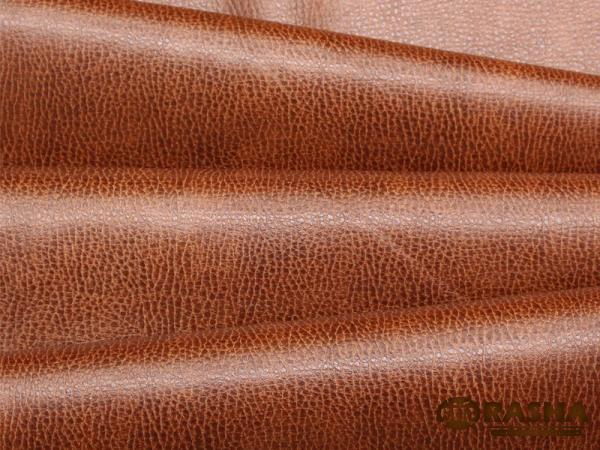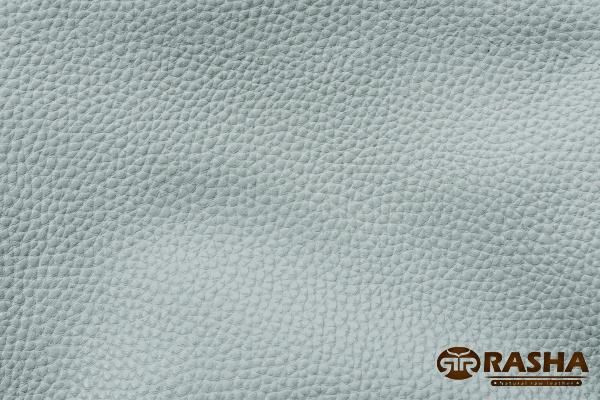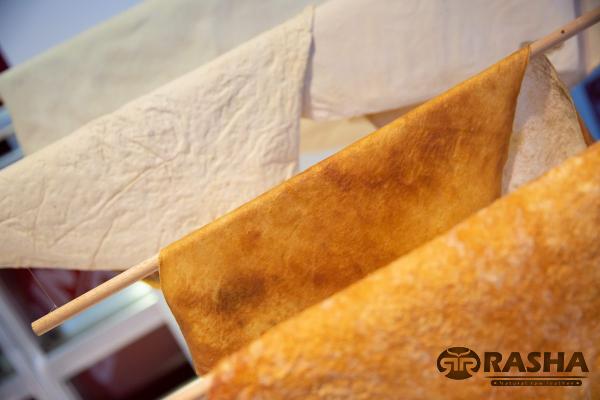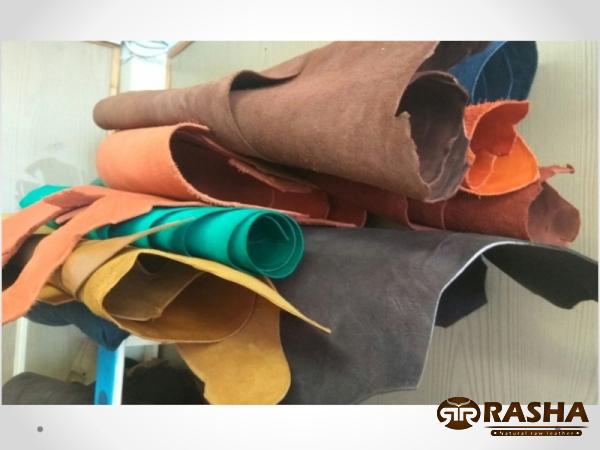Raw sheep skin is a valuable and versatile material that has been utilized for centuries across various industries. Known for its softness, durability, and unique properties, sheep skin offers numerous applications in the production of various products. This article aims to provide a comprehensive overview of raw sheep skin, its characteristics, processing methods, and diverse uses in industries such as fashion, footwear, interior design, and medical fields. Characteristics of Raw Sheep Skin: Sheep skin possesses several distinct characteristics that make it highly desirable for various applications. Firstly, sheep skin is known for its soft and supple texture, making it comfortable to touch and wear. Additionally, it is lightweight and flexible, allowing it to be easily manipulated during manufacturing processes. Sheep skin is also highly insulating, helping to regulate body temperature, making it a popular choice for garments and accessories. Processing Methods: The processing of raw sheep skin is a vital step in transforming the material into a usable product. The process includes several stages such as shearing, skin preservation, cleaning, scouring, and tanning. Shearing is the initial stage where the wool is removed from the skin, followed by preservation techniques to prevent spoilage during transportation. Cleaning and scouring involve the removal of dirt, grease, and any remaining wool fibers. These stages ensure the skin is thoroughly cleaned and prepared for tanning. Tanning is a critical process that converts raw sheep skin into a durable and stable material, preventing it from decomposing while enhancing its natural properties. Applications of Raw Sheep Skin: 1. Fashion Industry: Raw sheep skin is a highly sought-after resource in the fashion industry due to its exceptional aesthetic appeal and versatility. It is commonly used in the production of coats, jackets, vests, and accessories like gloves, hats, and bags.

leather
 Its softness and smooth texture make it ideal for luxury fashion items. 2. Footwear Industry: Sheep skin’s natural insulation and moisture-wicking properties make it highly suitable for footwear applications. The material is commonly used to produce high-quality sheepskin boots, slippers, and shoes. The breathability and comfort provided by sheep skin make it an excellent choice for those seeking warmth and style. 3. Interior Design: Raw sheep skin is also widely used in the field of interior design, bringing a sense of luxury and comfort to home decor. Sheepskin rugs or carpets add warmth and texture to living spaces, while sheepskin throws and cushions enhance the cozy and inviting atmosphere. Furthermore, sheep skin’s insulating properties also make it suitable for upholstery and curtains. 4. Medical and Healthcare: Sheep skin finds applications in the medical and healthcare industry due to its hypoallergenic and antibacterial properties. It is commonly used as a material for medical pads, bed covers, and wheelchair cushions, providing comfort and preventing pressure sores. The material’s breathability and moisture-wicking capabilities further contribute to its use in medical contexts. 5. Automotive Industry: The automotive industry also utilizes raw sheep skin for various purposes. Sheepskin seat covers provide both comfort and durability, while steering wheel covers and gear shift covers enhance grip and styling. Moreover, sheepskin can be used as sound insulation to reduce noise inside vehicles. Environmental Considerations: As with any animal-derived material, the sourcing and production of raw sheep skin raises environmental considerations. Sustainable and ethical practices in animal husbandry, shearing, and tanneries are crucial to minimize the environmental impact. Efforts such as using vegetable-based tanning agents and waste management systems help reduce pollution and promote responsible sourcing. Conclusion: Raw sheep skin is a versatile and valuable material with a wide range of applications across different industries. Its unique characteristics, such as softness, durability, and insulating properties, make it a sought-after material for fashion, footwear, interior design, medical, and automotive applications. While utilizing raw sheep skin, it is crucial to prioritize sustainable and ethical practices to minimize environmental impact. Exploring the Versatility and Applications of Raw Sheep Skin Fashion Industry: A Luxurious and Versatile Material Raw sheep skin is highly valued in the fashion industry for its luxurious appearance and versatility.
Its softness and smooth texture make it ideal for luxury fashion items. 2. Footwear Industry: Sheep skin’s natural insulation and moisture-wicking properties make it highly suitable for footwear applications. The material is commonly used to produce high-quality sheepskin boots, slippers, and shoes. The breathability and comfort provided by sheep skin make it an excellent choice for those seeking warmth and style. 3. Interior Design: Raw sheep skin is also widely used in the field of interior design, bringing a sense of luxury and comfort to home decor. Sheepskin rugs or carpets add warmth and texture to living spaces, while sheepskin throws and cushions enhance the cozy and inviting atmosphere. Furthermore, sheep skin’s insulating properties also make it suitable for upholstery and curtains. 4. Medical and Healthcare: Sheep skin finds applications in the medical and healthcare industry due to its hypoallergenic and antibacterial properties. It is commonly used as a material for medical pads, bed covers, and wheelchair cushions, providing comfort and preventing pressure sores. The material’s breathability and moisture-wicking capabilities further contribute to its use in medical contexts. 5. Automotive Industry: The automotive industry also utilizes raw sheep skin for various purposes. Sheepskin seat covers provide both comfort and durability, while steering wheel covers and gear shift covers enhance grip and styling. Moreover, sheepskin can be used as sound insulation to reduce noise inside vehicles. Environmental Considerations: As with any animal-derived material, the sourcing and production of raw sheep skin raises environmental considerations. Sustainable and ethical practices in animal husbandry, shearing, and tanneries are crucial to minimize the environmental impact. Efforts such as using vegetable-based tanning agents and waste management systems help reduce pollution and promote responsible sourcing. Conclusion: Raw sheep skin is a versatile and valuable material with a wide range of applications across different industries. Its unique characteristics, such as softness, durability, and insulating properties, make it a sought-after material for fashion, footwear, interior design, medical, and automotive applications. While utilizing raw sheep skin, it is crucial to prioritize sustainable and ethical practices to minimize environmental impact. Exploring the Versatility and Applications of Raw Sheep Skin Fashion Industry: A Luxurious and Versatile Material Raw sheep skin is highly valued in the fashion industry for its luxurious appearance and versatility.
Specifications of leather
 It is often used to create high-end fashion items such as coats, jackets, and vests. The softness and smooth texture of sheep skin make it ideal for creating luxurious outerwear pieces that exude both elegance and comfort. Additionally, the natural color variations of sheep skin add depth and visual interest to garments, making them a popular choice for designers seeking to create unique and visually appealing fashion statements. In recent years, sheep skin has also gained popularity in the creation of accessories like gloves, hats, and bags due to its soft and supple qualities, adding a touch of sophistication to any ensemble. Footwear Industry: A Combination of Comfort and Style Sheep skin has long been favored in the footwear industry for its exceptional properties that provide both comfort and style. The insulating and moisture-wicking capabilities of sheep skin make it an excellent choice for creating sheepskin boots, slippers, and shoes. The natural fibers of the sheep skin help regulate temperature, keeping feet warm in cold weather and cool in warmer climates. The material’s flexibility also allows for a snug and comfortable fit, while its durability ensures long-lasting footwear options. Sheepskin footwear is not only known for its practicality but also for the fashionable edge it offers, making it a popular choice among consumers seeking both comfort and style in their footwear. Interior Design: Adding Warmth and Texture to Living Spaces Raw sheep skin brings a touch of luxury and coziness to interior design, making it a popular choice for home decor. Sheepskin rugs or carpets add warmth and texture to living spaces, creating a welcoming and inviting atmosphere. The plush and soft feel of sheepskin underfoot enhances the overall comfort of a room, providing a sense of relaxation. Furthermore, sheepskin throws and cushions are often used to add an element of luxury to sofas, chairs, and beds. These accessories not only bring a visually pleasing texture but also offer comfort and warmth, making them a popular choice for creating cozy and stylish living spaces. Medical and Healthcare: Comfort and Care for Patients The unique properties of sheep skin make it valuable in the medical and healthcare industry. Sheepskin is hypoallergenic and has antibacterial properties, making it a suitable material for various medical applications. Medical pads, bed covers, and wheelchair cushions made from sheepskin provide optimum comfort for patients while helping prevent pressure sores. The material’s ability to distribute pressure evenly and reduce friction makes it an ideal choice for those with limited mobility or who spend extended periods in bed or in a wheelchair. Furthermore, sheep skin’s breathability and moisture-wicking capabilities also contribute to its use in medical settings, ensuring optimal hygiene and comfort for patients.
It is often used to create high-end fashion items such as coats, jackets, and vests. The softness and smooth texture of sheep skin make it ideal for creating luxurious outerwear pieces that exude both elegance and comfort. Additionally, the natural color variations of sheep skin add depth and visual interest to garments, making them a popular choice for designers seeking to create unique and visually appealing fashion statements. In recent years, sheep skin has also gained popularity in the creation of accessories like gloves, hats, and bags due to its soft and supple qualities, adding a touch of sophistication to any ensemble. Footwear Industry: A Combination of Comfort and Style Sheep skin has long been favored in the footwear industry for its exceptional properties that provide both comfort and style. The insulating and moisture-wicking capabilities of sheep skin make it an excellent choice for creating sheepskin boots, slippers, and shoes. The natural fibers of the sheep skin help regulate temperature, keeping feet warm in cold weather and cool in warmer climates. The material’s flexibility also allows for a snug and comfortable fit, while its durability ensures long-lasting footwear options. Sheepskin footwear is not only known for its practicality but also for the fashionable edge it offers, making it a popular choice among consumers seeking both comfort and style in their footwear. Interior Design: Adding Warmth and Texture to Living Spaces Raw sheep skin brings a touch of luxury and coziness to interior design, making it a popular choice for home decor. Sheepskin rugs or carpets add warmth and texture to living spaces, creating a welcoming and inviting atmosphere. The plush and soft feel of sheepskin underfoot enhances the overall comfort of a room, providing a sense of relaxation. Furthermore, sheepskin throws and cushions are often used to add an element of luxury to sofas, chairs, and beds. These accessories not only bring a visually pleasing texture but also offer comfort and warmth, making them a popular choice for creating cozy and stylish living spaces. Medical and Healthcare: Comfort and Care for Patients The unique properties of sheep skin make it valuable in the medical and healthcare industry. Sheepskin is hypoallergenic and has antibacterial properties, making it a suitable material for various medical applications. Medical pads, bed covers, and wheelchair cushions made from sheepskin provide optimum comfort for patients while helping prevent pressure sores. The material’s ability to distribute pressure evenly and reduce friction makes it an ideal choice for those with limited mobility or who spend extended periods in bed or in a wheelchair. Furthermore, sheep skin’s breathability and moisture-wicking capabilities also contribute to its use in medical settings, ensuring optimal hygiene and comfort for patients.
buy leather
 Automotive Industry: Combining Comfort and Style in Vehicles The automotive industry incorporates raw sheep skin into various components to enhance both comfort and style in vehicles. Sheepskin seat covers are widely used as they provide a soft and comfortable surface for drivers and passengers while also protecting the original upholstery. These seat covers not only add an element of luxury to the vehicle’s interior but also offer additional insulation, keeping passengers warm in colder climates. Additionally, sheepskin can be utilized for steering wheel covers and gear shift covers, providing an improved grip and enhancing the aesthetic appeal of vehicle interiors. Moreover, sheepskin is valued for its sound insulation properties, reducing noise inside the vehicle and creating a more peaceful driving experience. Sustainability in Raw Sheep Skin Production: Ethical and Responsible Practices As consumers become more conscious of ethical and sustainable practices, the sourcing and production of raw sheep skin must prioritize environmental and animal welfare considerations. Sustainable and ethical practices in animal husbandry, shearing, and tanning processes are crucial to minimize the environmental impact. This involves ensuring that sheep are reared in humane conditions, using methods that prioritize their welfare and promote responsible farming practices. In addition, efforts have been made to reduce the use of harmful chemicals by utilizing vegetable-based tanning agents and implementing waste management systems in tanneries. These practices help reduce pollution and promote the responsible sourcing and production of raw sheep skin products. Conclusion: Raw sheep skin offers a wide range of applications in industries such as fashion, footwear, interior design, medical, and automotive fields. Its unique characteristics, including softness, durability, insulating properties, and moisture-wicking capabilities, make it a sought-after material for various products. From luxurious fashion items to comfortable and stylish footwear, sheepskin is a versatile material that enhances both aesthetics and functionality. Moreover, its use in interior design enriches living spaces with warmth and texture, while also providing comfort and elegance. In the medical field, sheepskin ensures the well-being of patients, offering comfort and preventing pressure sores. Furthermore, its incorporation in the automotive industry creates a luxurious and comfortable driving experience. As the demand for sustainable and ethical practices rises, it is essential to prioritize responsible sourcing and production methods to minimize the environmental impact of raw sheep skin. By embracing sustainable practices, the industry can continue to make use of this versatile material while protecting the welfare of animals and the environment.
Automotive Industry: Combining Comfort and Style in Vehicles The automotive industry incorporates raw sheep skin into various components to enhance both comfort and style in vehicles. Sheepskin seat covers are widely used as they provide a soft and comfortable surface for drivers and passengers while also protecting the original upholstery. These seat covers not only add an element of luxury to the vehicle’s interior but also offer additional insulation, keeping passengers warm in colder climates. Additionally, sheepskin can be utilized for steering wheel covers and gear shift covers, providing an improved grip and enhancing the aesthetic appeal of vehicle interiors. Moreover, sheepskin is valued for its sound insulation properties, reducing noise inside the vehicle and creating a more peaceful driving experience. Sustainability in Raw Sheep Skin Production: Ethical and Responsible Practices As consumers become more conscious of ethical and sustainable practices, the sourcing and production of raw sheep skin must prioritize environmental and animal welfare considerations. Sustainable and ethical practices in animal husbandry, shearing, and tanning processes are crucial to minimize the environmental impact. This involves ensuring that sheep are reared in humane conditions, using methods that prioritize their welfare and promote responsible farming practices. In addition, efforts have been made to reduce the use of harmful chemicals by utilizing vegetable-based tanning agents and implementing waste management systems in tanneries. These practices help reduce pollution and promote the responsible sourcing and production of raw sheep skin products. Conclusion: Raw sheep skin offers a wide range of applications in industries such as fashion, footwear, interior design, medical, and automotive fields. Its unique characteristics, including softness, durability, insulating properties, and moisture-wicking capabilities, make it a sought-after material for various products. From luxurious fashion items to comfortable and stylish footwear, sheepskin is a versatile material that enhances both aesthetics and functionality. Moreover, its use in interior design enriches living spaces with warmth and texture, while also providing comfort and elegance. In the medical field, sheepskin ensures the well-being of patients, offering comfort and preventing pressure sores. Furthermore, its incorporation in the automotive industry creates a luxurious and comfortable driving experience. As the demand for sustainable and ethical practices rises, it is essential to prioritize responsible sourcing and production methods to minimize the environmental impact of raw sheep skin. By embracing sustainable practices, the industry can continue to make use of this versatile material while protecting the welfare of animals and the environment.










Your comment submitted.